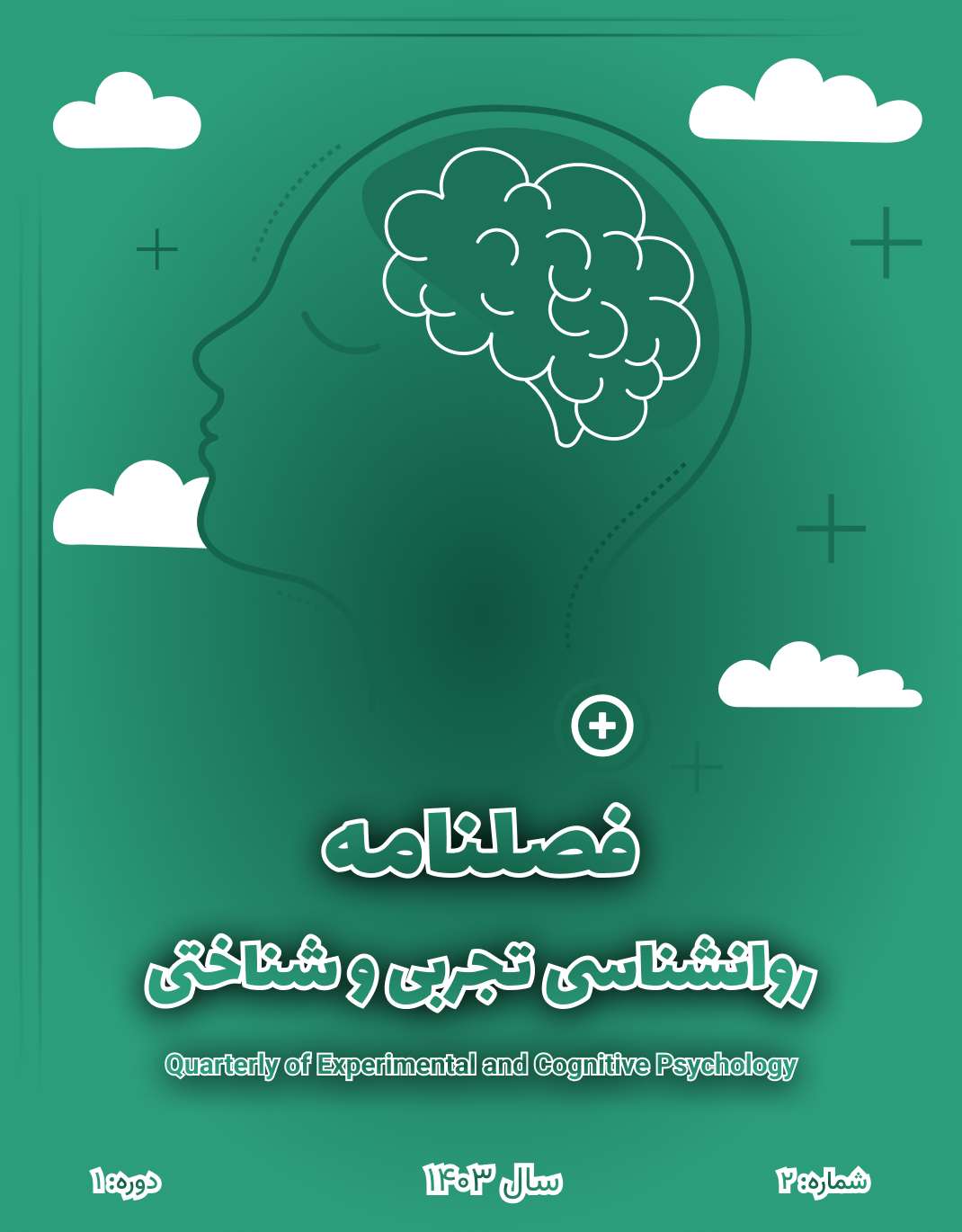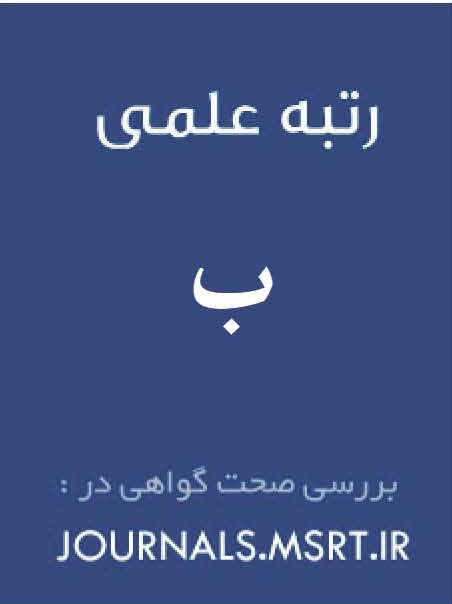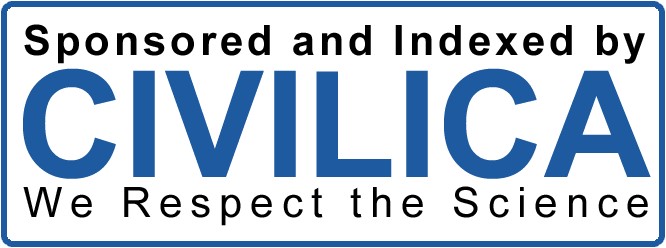تدوین بسته امید به زندگی مبتنی بر پذیرش و تعهد ویژه نوجوانان دارای رفتار پرخطر
کلمات کلیدی:
تدوین بسته, امید به زندگی, پذیرش و تعهد, نوجوانانچکیده
هدف: پژوهش حاضر با هدف تدوین بسته امید به زندگی مبتنی بر پذیرش و تعهد ویژه دانشآموزان با رفتارهای پرخطر بود.
مواد و روش: این پژوهش از نوع کیفی به روش پژوهش تحلیل محتوای هسیه و شانون (2005) بود. محیط پژوهش کلیهی متون مرتبط با امید به زندگی و پذیرش و تعهد بود که بر اساس ملاکهای ورود و خروج از هریک از آنها تعداد ده متن انتخاب شد. ملاک انتخاب اشباع دادههای کیفی بود. روش تحلیل دادهها روش پنج مرحلهای هسیه و شانون (2005) برای هر دسته از متون بود. برای تدوین بسته از روش شش مرحلهای یوسفی و گلپرور (2023) استفاده شد و ساختار و محتوای بسته تدوین شد
یافتهها: نتایج بخش اول برای هر دو دسته از متون به خروج ابعاد، مفاهیم و خرده مفاهیم منجر گردید که عبارت بودند از نتایج این بخش نشان داد امید به زندگی در نوجوانان حاوی چند مفهوم اصلی است که عبارت بودند از: 1)توانایی تنظیم رفتار (حل مسئله، هدفمندی و انجام رفتار صحیح، خودکارآمدی، مهارتهای بین فردی)؛ 2) تنظیم هیجانات (پذیرش احساسات منفی و ذهن آگاهی) 3) تنظیم شناختی (تفکر مثبت و خوش بینی و تفکر منعطف). تحلیل متون پذیرش و تعهد نشان داد که در این نظریه شش بعد مهم 1) پذیرش، 2) زندگی در زمان حال، 3) ناهمجوشی از افکار ناکارساز؛ 4) روشن سازی ارزشها، 5) تعیین اهداف موثر و دنبال کردن آن و 6) مشاهده خود. در مرحله تدوین بسته دو هدف پنهان برای بسته در نظر گرفته شد: 1)نوجوانان بدانند برای حل مسائل خود باید از چه روشی استفاده کنند، 2) چگونه مسائل را حل کنند تا امید را در خود حفظ کنند. در نهایت این بسته توسط هفت متخصص حوزهی نوجوانی و درمان پذیرش و تعهد بسته تدوین شده بررسی شد و به کمک ضریب توافق ارزیابان اعتباریابی محتوایی شد و اعتبار آن تایید شد.
نتیجهگیری: بنابراین، میتوان از این بسته در مداخلات مربوط به نوجوانان دارای رفتار پرخطر استفاده نمود.
دانلودها
مراجع
Abbasi, A., Mohammadi, L., & Mohammadi, K. (2024). Validity and reliability in qualitative research: A systematic review. Information Processing and Management Journal, 40(2), 375-412. https://jipm.irandoc.ac.ir/article_717062.html?lang=en
Althoff, R. R., & Ametti, M. (2021). Measurement of dysregulation in children and adolescents. Child and Adolescent Psychiatric Clinics, 30(2), 321-333. https://doi.org/10.1016/j.chc.2020.10.004
Arfken, M. (2021). Towards a Critical Psychology of Hope. Awry: Journal of Critical Psychology, 2(1), 1-2. https://www.google.com/url?sa=t&source=web&rct=j&opi=89978449&url=https://awryjcp.com/index.php/awry/article/download/61/21&ved=2ahUKEwjIxqb-3diOAxWvgP0HHURjOL0QFnoECB4QAQ&usg=AOvVaw1CV0uaui0kP6KNjM9xMOf1
Artawijaya, L. M., & Supratiwi, M. (2024). Cognitive Flexibility and Resilience in Adolescents: Exploring Gender Differences and Cultural Implications. Nusantara Journal of Behavioral and Social Science, 3(4), 151-160. https://doi.org/10.47679/njbss.202462
Assari, S., Najand, B., Najand, I., & Grace, S. (2024). Behavioral and psychosocial correlates of hope among youth. Journal of Medicine, Surgery, and Public Health, 2, 100088. https://doi.org/10.1016/j.glmedi.2024.100088
Baramkeh, Z., Fadavi, M. S., & Yousefi, Z. (2024). Developing a successful intelligence training package aimed at reducing high-risk behaviors in adolescents. Psychological Dynamics in Mood Disorders, 2(4), 101-114. https://doi.org/10.61838/kman.pdmd.2.4.11
Benton, T. D., Muhrer, E., Jones, J. D., & Lewis, J. (2021). Dysregulation and suicide in children and adolescents. Child and Adolescent Psychiatric Clinics, 30(2), 389-399. https://doi.org/10.1016/j.chc.2020.10.008
Bina Vajargahi, A., Akbari, B., & Hamzehpour Haghighi, T. (2024). The effectiveness of acceptance and commitment therapy on academic procrastination and self-control of female students with internet addiction. Ravanshenasi-e-Ruyesh, 13(9), 101-110. https://frooyesh.ir/browse.php?a_id=5267&slc_lang=en&sid=1&printcase=1&hbnr=1&hmb=1
Blackledge, J. T., & Hayes, S. C. (2021). Acceptance and Commitment Therapy for adolescent anxiety: A randomized controlled trial. Journal of Contextual Behavioral Science, 19, 1-10.
Blake, A. (2025). Estimating the Impact of Out-of-Home Placement on Health Risk Behavior in Adolescents Exposed to Maltreatment: An Advanced Causal Inference Approach Arizona State University]. https://www.proquest.com/openview/177eca365a2764b36569ed93231466b4/1.pdf?pq-origsite=gscholar&cbl=18750&diss=y
Clement, D. N., Wingate, L. R., Cole, A. B., O'Keefe, V. M., Hollingsworth, D. W., Davidson, C. L., & Hirsch, J. K. (2020). The common factors of grit, hope, and optimism differentially influence suicide resilience. International journal of environmental research and public health, 17(24), 9588. https://doi.org/10.3390/ijerph17249588
Colla, R., Williams, P., Oades, L. G., & Camacho-Morles, J. (2022). "A new hope" for positive psychology: a dynamic systems reconceptualization of hope theory. Frontiers in psychology, 13, 809053. https://doi.org/10.3389/fpsyg.2022.809053
Duncan, R. J., McClelland, M. M., & Acock, A. C. (2017). Relations between executive function, behavioral regulation, and achievement: Moderation by family income. Journal of Applied Developmental Psychology, 49, 21-30. https://doi.org/10.1016/j.appdev.2017.01.004
Ferreira, M. G., Mariano, L. I., de Rezende, J. V., Caramelli, P., & Kishita, N. (2022). Effects of group Acceptance and Commitment Therapy (ACT) on anxiety and depressive symptoms in adults: A meta-analysis. Journal of affective disorders, 309, 297-308. https://doi.org/10.1016/j.jad.2022.04.134
Gaur, D., & Gupta, S. (2024). An integrative review of emotional dysregulation treatment approaches for adolescents: Impact, challenges, and future prospects. International Journal of Pharmaceutical Sciences, 6(1), 21-26. https://doi.org/10.33545/26648377.2024.v6.i1a.38
Gloster, A. T., Walder, N., Levin, M. E., Twohig, M. P., & Karekla, M. (2020). The empirical status of acceptance and commitment therapy: A review of meta-analyses. Journal of Contextual Behavioral Science, 18, 181-192. https://doi.org/10.1016/j.jcbs.2020.09.009
Hayes, S. C., Levin, M. E., Plumb-Vilardaga, J., Villatte, J. L., & Pistorello, J. (2013). Acceptance and commitment therapy and contextual behavioral science: Examining the progress of a distinctive model of behavioral and cognitive therapy. Behavior therapy, 44(2), 180-198. https://doi.org/10.1016/j.beth.2009.08.002
Hayes, S. C., Pistorello, J., & Levin, M. E. (2012). Acceptance and commitment therapy as a unified model of behavior change. The counseling psychologist, 40(7), 976-1002. https://doi.org/10.1177/0011000012460836
Hayes, S. C., Strosahl, K. D., & Wilson, K. G. (2011). Acceptance and commitment therapy: The process and practice of mindful change. Guilford Press. https://psycnet.apa.org/record/2012-00755-000
Hsieh, H. F., & Shannon, S. E. (2005). Three approaches to qualitative content analysis. Qualitative Health Research, 15(9), 1277-1288. https://doi.org/10.1177/1049732305276687
Huen, J. M., Ip, B. Y., Ho, S. M., & Yip, P. S. (2015). Hope and hopelessness: The role of hope in buffering the impact of hopelessness on suicidal ideation. PLoS One, 10(6), e0130073. https://doi.org/10.1371/journal.pone.0130073
Hughes, L. S., Clark, J., Colclough, J. A., Dale, E., & McMillan, D. (2017). Acceptance and commitment therapy (ACT) for chronic pain: a systematic review and meta-analyses. The Clinical Journal of Pain, 33(6), 552-568. https://doi.org/10.1097/AJP.0000000000000425
Jesline, J., Romate, J., Diya, E., & Rajkumar, E. (2025). Mediating role of resilience on the relationship between meta emotions and emotional regulation among neglected adolescents. BMC psychology, 13(1), 1-13. https://doi.org/10.1186/s40359-025-02856-0
Kim, Y. J., & Lee, C. S. (2014). The mediating effect of hope between stress and suicidal ideation of adolescents. Journal of Digital Convergence, 12(6), 539-547. https://doi.org/10.14400/JDC.2014.12.6.539
Kwok, S. Y., Gu, M., & Lai, K. Y. (2024). A longitudinal study of perceived social support from friends and hope in adolescents: emotional intelligence as the mediator. Current Psychology, 43(25), 21518-21529. https://doi.org/10.1007/s12144-024-05875-z
Li, H., Wong, C. L., Jin, X., Chen, J., Chong, Y. Y., & Bai, Y. (2021). Effects of acceptance and commitment therapy on health-related outcomes for patients with advanced cancer: a systematic review. International journal of nursing studies, 115, 103876. https://doi.org/10.1016/j.ijnurstu.2021.103876
Long, K. N., Wilkinson, R., Cowden, R. G., Chen, Y., & VanderWeele, T. J. (2024). Hope in adolescence and subsequent health and well-being in adulthood: An outcome-wide longitudinal study. Social Science & Medicine, 347, 116704. https://doi.org/10.1016/j.socscimed.2024.116704
MacArthur, G., Caldwell, D. M., Redmore, J., Watkins, S. H., Kipping, R., White, J., Chittleborough, C., Langford, R., Er, V., Lingam, R., Pasch, K., Gunnell, D., Hickman, M., & Campbell, R. (2018). Individual‐, family‐, and school‐level interventions targeting multiple risk behaviours in young people. Cochrane Database of Systematic Reviews(10). https://doi.org/10.1002/14651858.CD009927.pub2
McCracken, L. M., & Vowles, K. E. (2014). Acceptance and commitment therapy and mindfulness for chronic pain: model, process, and progress. American psychologist, 69(2), 178. https://doi.org/10.1037/a0035623
Mehdour, E., Choobforoushzadeh, A., Mohammadpanah, A., & Shirvi, E. (2023). The effectiveness of acceptance and commitment therapy on reducing hopelessness and anxiety in working children in Yazd. Toloo-e-Behdasht, 22(5), 13-27. https://tbj.ssu.ac.ir/article-1-3542-en.html
Mirzaei, M., Yousefi, Z., & Baratali, M. (2024). Development of an Anxiety Management Package for Mothers with Children Preparing for University Entrance Exams. International Journal of Education and Cognitive Sciences, 5(1), 108-116. https://doi.org/10.61838/kman.ijecs.5.1.13
Moharrami, S., Hosseininassab, D., & Alivandi Vafa, M. (2024). Comparing the effectiveness of schema therapy and acceptance and commitment therapy on behavioral problems of male high school adolescents: A quasi-experimental study. Journal of Rafsanjan University of Medical Sciences, 23(11), 948-959. https://doi.org/10.61186/jrums.23.11.948
Mossini, M. (2024). Efficacy of Dialectical Behavioral Therapy Skills in Addressing Emotional Dysregulation among Adolescents: A Systematic Literature Review. International Journal on Social and Education Sciences, 6(3), 439-451. https://doi.org/10.46328/ijonses.684
Norris, S. A., Frongillo, E. A., Black, M. M., Dong, Y., Fall, C., Lampl, M., Liese, A. D., Naguib, M., Prentice, A., Rochat, T., Stephensen, C. B., Tinago, C. B., Ward, K. A., Wrottesley, S. V., & Patton, G. C. (2022). Nutrition in adolescent growth and development. The lancet, 399(10320), 172-184. https://doi.org/10.1016/S0140-6736(21)01590-7
Patton, G. C., Tollit, M. M., Romaniuk, H., Spence, S. H., Sheffield, J., & Sawyer, M. G. (2011). A prospective study of the effects of optimism on adolescent health risks. Pediatrics, 127(2), 308-316. https://doi.org/10.1542/peds.2010-0748
Petersen, J. M., Ona, P. Z., & Twohig, M. P. (2024). A review of acceptance and commitment therapy for adolescents: developmental and contextual considerations. Cognitive and Behavioral Practice, 31(1), 72-89. https://doi.org/10.1016/j.cbpra.2022.08.002
Ropaj, E. (2023). Hope and suicidal ideation and behaviour. Current opinion in psychology, 49, 101491. https://doi.org/10.1016/j.copsyc.2022.101491
Ruiz, F. J. (2010). A review of Acceptance and Commitment Therapy (ACT) empirical evidence: Correlational, experimental psychopathology, component and outcome studies. International journal of psychology and psychological therapy, 10(1), 125-162. https://www.researchgate.net/publication/224901847_A_review_of_Acceptance_and_Commitment_Therapy_ACT_empirical_evidence_Correlational_experimental_psychopathology_component_and_outcome_studies
Sabri, S., Mohamed Hussin, N. A., & Chooi, W. T. (2024). Exploration of hope among young adults with cancer in Malaysia. Journal of Adolescent and Young Adult Oncology, 13(1), 213-223. https://doi.org/10.1089/jayao.2023.0016
Scioli, A. (2020). The psychology of hope: A diagnostic and prescriptive account. Historical and Multidisciplinary Perspectives on Hope, 137-163. https://doi.org/10.1007/978-3-030-46489-9_8
Stewart, J. G., Esposito, E. C., Glenn, C. R., Gilman, S. E., Pridgen, B., Gold, J., & Auerbach, R. P. (2017). Adolescent self-injurers: Comparing non-ideators, suicide ideators, and suicide attempters. Journal of psychiatric research, 84, 105-112. https://doi.org/10.1016/j.jpsychires.2016.09.031
Timko, C. A., Schnabel, J., & Orloff, N. C. (2024). The importance of improving cognitive flexibility in adolescents with anorexia nervosa: The case for cognitive remediation therapy. International Journal of Eating Disorders, 57(5), 1109-1118. https://doi.org/10.1002/eat.24164
Underwood, J. M. (2020). Overview and methods for the youth risk behavior surveillance system-United States, 2019. MMWR supplements, 69. https://doi.org/10.15585/mmwr.su6901a1
Ye, Y., Chen, B., Zhen, R., Li, Y., Liu, Z., & Zhou, X. (2024). Childhood maltreatment patterns and suicidal ideation: mediating roles of depression, hope, and expressive suppression. European Child & Adolescent Psychiatry, 33(11), 3951-3964. https://doi.org/10.1007/s00787-024-02442-6
Zheng, W., Akaliyski, P., Ma, C., & Xu, Y. (2024). Cognitive flexibility and academic performance: Individual and cross-national patterns among adolescents in 57 countries. Personality and individual differences, 217, 112455. https://doi.org/10.1016/j.paid.2023.112455
دانلود
چاپ شده
ارسال
بازنگری
پذیرش
شماره
نوع مقاله
مجوز
حق نشر 2025 Mahtab Esmaeliepour (Author); Zahra Yousefi; Hadi Farhadi (Author)

این پروژه تحت مجوز بین المللی Creative Commons Attribution-NonCommercial 4.0 می باشد.





